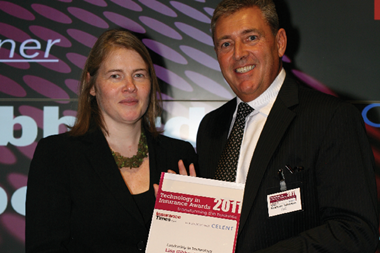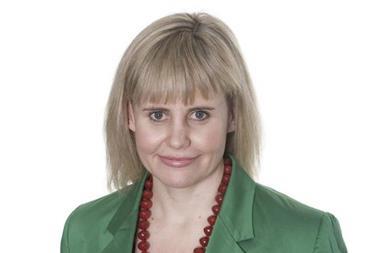Outdated, inefficient systems pose a potential problem for insurers looking to sell up
When insurance companies look to sell up, their back-office systems come under close scrutiny.
Often creaking, outdated and ignored, many IT systems were designed around the quirks of individual firms and can be decades old. The result is that they can be an albatross around the necks of the owners looking to sell up.
This was never a huge problem in the past, when less attention was paid to dealing with IT in the M&A process, but many insurers have added ‘good IT systems’ to the checklist of requirements they look for in an acquisition.
“There is so much work involved in merging companies that if the IT systems are modern and can bring immediate benefit in terms of better information and improved service, it’s a big win,” says Northdoor director of consultancy Rob Stavrou.
Insurers often inherit several IT systems from various acquisitions over the years. Insurers such as RSA and Aviva have ended up with 10 to 15 core systems that do the same operations along similar product lines, says one consultant.
Another factor driving integration between different platforms is the spread of software using the Microsoft.NET framework, which has opened up opportunities for different systems to communicate over the internet.
Decision-maker ignorance
Part of the problem for insurers has been that the people making the decisions on M&A are often chief financial officers and actuaries, not IT specialists. They can find it hard to weigh up accurately the state of a potential acquisition’s IT.
“You can see them making decisions based on synergies in balance sheet, distribution and product lines, and saying: ‘I don’t really understand the technology but it doesn’t sound like a massive issue, we’ll deal with it down the line’,” the consultant says.
Insurers looking to upgrade their IT have three basic options: replace the systems; update existing systems bit by bit; or outsource. Whatever they do, according to Celent research, there is increased insurer awareness of the need to tackle legacy IT issues.
Its studies show that 53% of insurers were well into systems modernisation in 2010, compared with 26% in 2008.
Technological improvement in the London market is laying the groundwork for easier acquisitions in the future. The process is being driven by the pressure of Solvency II and the introduction of better products from software houses, which make upgrading more feasible.
Solvency II driver
Celent insurance analyst Craig Beattie argues that Solvency II will put further pressure on insurers to update their systems in order to make it easier for them to demonstrate the risks they accept, their risk model and the way they track policy details.
“With legacy systems, that is going to be very difficult,” Beattie says. “Modern systems take this in their stride.”
Vendors have improved their IT products in response to the number of London market insurers shrinking and the rising amount of premium controlled per firm, he adds.
A firm with sound IT systems makes sense for those on the acquisition trail. A good back-office system can speed up the due diligence process and cut costs.
With so many firms looking to sell up, those that update their systems before they put up the ‘for sale’ sign will get to the front of the queue.
Stavrou says many firms have been coming to him for advice on cleaning up their IT systems before buying or selling.
“It is quite common when there is M&A activity that a company will look to get their house in order, or at least show they have a plan of action to address shortfalls,” he says.
As the movement for upgrading systems gathers pace, for insurers, there’s not going to be a better time.
Market views: Would you rule out an acquisition because of outdated back-office systems?
Bluefin chief executive Stuart Reid: “Not for the back-office system, not the system they run their clients on, because nine times out of 10 we would update it and transfer it to a system we have got.
“The issue we would have would be in the compliance areas – how they deal with client money, how they deal with their office money and so on.
“If they weren’t dealing with those areas, we wouldn’t be able to do the due diligence adequately enough to get a good sight on the business to purchase.”
Towergate regional managing director Alan McEwan: “I don’t think we’ve ever turned down an acquisition solely on that basis. We are looking at various acquisitions at the moment and their IT does vary.
“It’s not a deal breaker for us if they need an IT upgrade; IT is fixable. But it might be reflected in the purchase price if we had to invest in essential upgrades.
“We would do a great deal of investigation at the outset. Ultimately it’s down to how well it will fit and how much value the acquisition will add to our business.”
Jelf chief executive (insurance) Phil Barton: “It can make it a lot more difficult, but it wouldn’t be a deal-breaker like a significant regulatory breach. We’ve made 30-odd acquisitions and those businesses all used different systems. We have a partnership with Acturis and migrate the client bases onto our platform. It would be ideal if all the businesses we bought were on Acturis. We would, and have in the past, walked away from some acquisitions.”
Giles group managing director Sarah Lyons: “All commercial business goes onto our primary system, Acturis, so we migrate the systems of every company we buy onto that.
“For personal lines, it’s a different system, but we would still migrate it to our system. You get economies of scale, you get all your management information on one platform, it’s easier for insurer accounts, everyone operates in the same way, and you know you’re compliant.”






































No comments yet